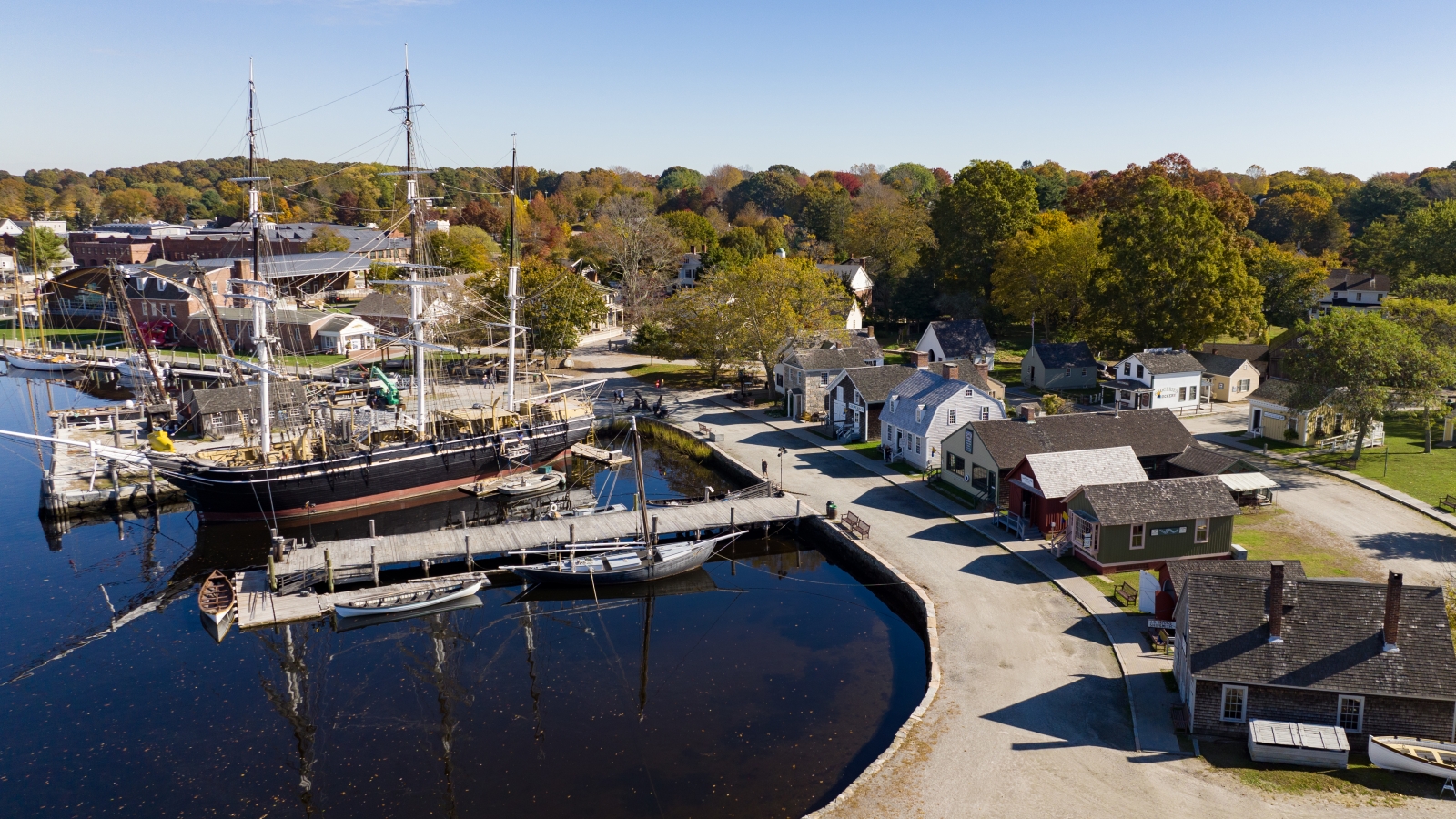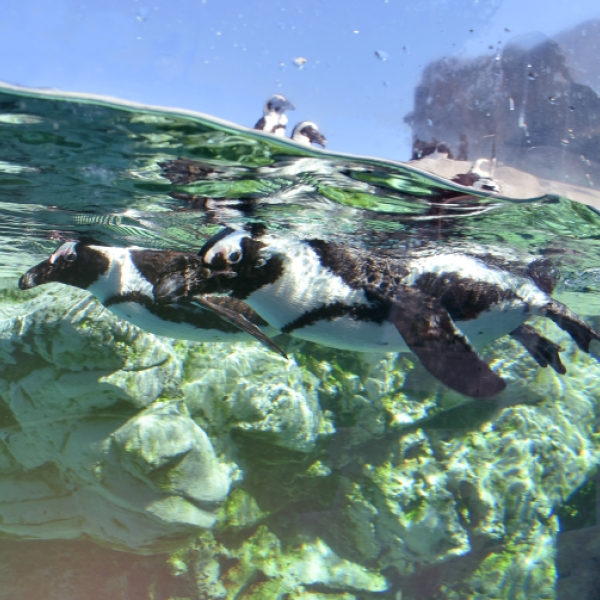
Whales, Whalers and the Shore
Whales and whaling were an important part of Connecticut’s economy in the 19th century, and it’s still possible to get a sense of those days if you know where to visit.
- Spring
- Summer
- Fall
- New London and Whale Oil Row
- Mystic Seaport Museum
- Mystic Aquarium
New London Historic Waterfront District, New London


New London and Whale Oil Row
For many years during the 19th century, New London was the nation’s second-busiest whaling port after New Bedford, MA. And today, it’s not hard to find reminders of those days, especially in the city’s architecture. Begin by checking out the four Greek Revival houses that make up Whale Oil Row, built between 1835 and 1845 for ship owners and merchants who made their money in the whaling trade. Next, visit the Custom House Maritime Museum (seasonal) to take in more of New London’s relationship with the sea.
Mystic Seaport Museum, Mystic


Mystic Seaport Museum
It’s a short drive to Mystic Seaport Museum, a re-created 19th-century maritime village on the shores of Long Island Sound. Here you’ll find a cooperage, ship carver’s shop, school house, shipping office and many other essential public and commercial establishments from whaling days. You can even board the L.A. Dunton, a classic 19th-century fishing schooner, or the Charles W. Morgan, a recently restored 1841 whaler.
Mystic Aquarium, Mystic


Mystic Aquarium
At this point, you’d probably like to actually see a whale, so a very short ride to Mystic Aquarium is in order. There you’ll find sea lions, African penguins and many, many fish of every stripe and color – but more to the point here, the aquarium is home to New England’s only beluga whales.











